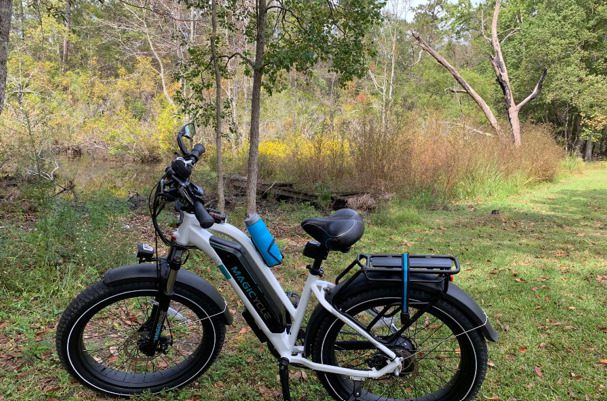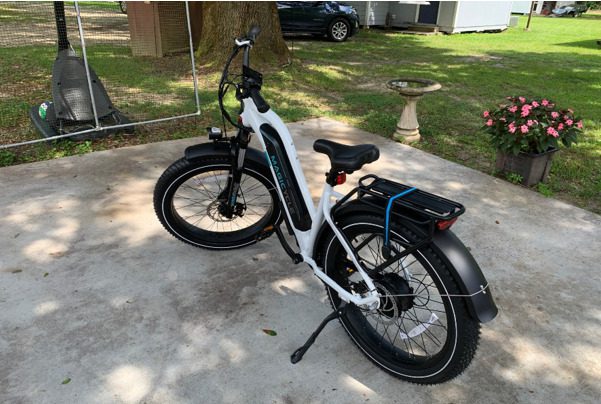Nowadays, electric bicycles have become a great way to get around. An important part of deciding what ebike to buy is understanding its motor. The electric bike motor is one of the most important components of the ebike. It is responsible for providing the power that allows you to accelerate and climb hills while riding your ebike.
The hub motor is the most common type of motor that is integrated into the front or rear wheel. So what type of motor should you choose for your ebike? Is it a front wheel or a rear wheel hub motor? To give you a better understanding of hub motors, this article will explain the differences between the front and rear wheel motors, as well as their pros and cons of them.
What’s the difference between front and rear wheel motor
Before we decide whether to choose a front or rear-wheel motor, let’s take a look at the differences between these two types of motors. The most obvious difference is that an e-bike with a front hub motor has the motor built into the front wheel, while an e-bike with a rear hub motor has the motor built into the rear wheel. These two types of motors work in the same way, only the placement is different.
At present, there are many well-known electric bike hub motor brands dominating the market, such as Bosch, Shimano, Bafang, Shengyi, etc. All Magicycle ebikes are equipped with a Shengyi hub motor. Shengyi provides reliable motors with good power and enough torque for our electric bikes for adults. For example, the Magicycle Cruiser has a 750W motor with a torque of 86Nm. It allows you to tackle steep hills with ease and enjoy quick acceleration.
Front-wheel hub motor
The front wheel hub motor effectively creates a powerful drive system for your ebike. The motor drives the front wheel, which then makes the bike move. Here is a list of the pros and cons of front hub motors. This will allow you to see at a glance what performance it can provide you with.
Pros
More Drivetrain Option: The front wheel is independent of the bike’s drivetrain, so the front wheel motor can be used with any drivetrain, from belt drives to internally geared hubs.
Easy to maintain: Since the front wheel motor is separate from the rear gear system, it is not complicated to install and remove the motor when necessary.
Better weight distribution: The weight of the motor is on the front wheel and the rider’s weight is distributed on the rear wheel, which better balances the stress they put on the bike.
Cons
Poor Traction: Front-wheel motor ebikes tend to have traction problems. During acceleration, the front wheel loses grip and tends to slip.
Low Motor Power: The rapid acceleration generated by power tends to exacerbate the diminished traction. For this reason, the power of the front wheel motor must be kept low for the safety of the rider.
Pulling Sensation: The front wheel motor can create an uneasy feeling that the bike is pulling the rider down the road. This can have an effect on the cyclist’s ride.
Rear wheel hub motor
The rear wheel motor is the most common of all our Magicycle electric mountain bikes. Unlike the front wheel motor, it can give you the familiar pushing sensation. With the rear wheel motor, you can also enjoy a wide range of power options. There are two sides to everything, and so is the rear motor. Next, let’s take a look at the main pros and cons of it.
Pros
Better Traction: Since the rider’s weight is stabilized on the rear wheel, the power from the rear wheel is unlikely to cause the ebike to slide and spin. Also, the motor is in the back, there is not too much power to the front wheel to make it slip.
Wide Range of Power: The strong bike frame allows you to hold the more powerful motor in the rear wheel. So you have a wider range of motor power options for your ebike. If your ebike is equipped with a more powerful rear motor, its torque will also increase.
Aesthetic advantage: The rear hub motor can be easily hidden in the gears at the back of the bike, making the rear motor more invisible than the front one. This design will add to the apparence advantage of the e-bike and is more in line with the aesthetics of the public.
Cons
Complex installation and maintenance: Rear wheel motors are more complicated to install and maintain because removing the rear wheels requires interference with the drivetrain.
More wear and tear: All the weight concentrated in the rear causes an increased rate of wear on the rear components. So maintenance is important to extend the life of your ebike.
Poor weight distribution: While a rear wheel motor generally gives more traction, the fact is that the weight of both the rider and the motor is at the rear of the bike. The concentration of weight in the rear can make the bike a little difficult to carry.
Factors to consider when selecting a front or rear hub motor
There are advantages and disadvantages to putting the hub motor in the front wheel and in the rear wheel. You have to make some compromises. The position of these motors can have an effect on weight distribution, traction, and safety. These are also the main things you need to consider when choosing the placement of your ebike hub motor.
Weight distribution
Ideally, most people want the weight of their ebike to be distributed as evenly as possible from the front to the back. No one would want to concentrate all the weight in one place, which would also add resistance to our riding.
The front wheel hub motor allows for better weight distribution. This is because most of the weight of the bike is naturally near the rear of the bike. The rider’s weight is also at the back. Rear hub motor ebikes usually place the heavy motor at the back of the bike. Due to the position of the seat, most of the rider’s weight is also located near the rear. This makes the rear of the bike a little heavier.
Although the front wheel motor will be slightly better than the rear wheel motor in terms of weight distribution, Magicycle actually takes this into account when building our electric bikes, trying to balance the pressure on the bike between the front and rear wheels. That’s what makes our e-bikes so smooth and easy to ride.
Traction
The rear hub motor provides better traction than the front hub motor. This is because most of the weight is concentrated in the rear of the bike. But these weights also increase the friction between the tires and the ground. This makes it less likely that the rear wheel will lose traction and slip during hard acceleration or cornering.
The rear-wheel motor has much better traction than the front-wheel motor, which is especially important for those who own mountain bikes. Because they will be tackling more challenging roads and even going back to off-road terrain, that’s when they will need a better grip. So if you like extreme sports or mountain biking, then an ebike with a rear-wheel motor will be more suitable than a front-wheel motor, like Magicycle electric mountain bike.
Usage
These two types of motors are slightly different in use, and you can choose the right hub motor for the terrain you are using. The front hub motor is suitable for those who ride around town or occasionally on flat roads. For those who just want a comfortable, safe and reliable daily commuter ebike, a front hub motor is really a good choice for your ebike. The rear hub motor is suitable for professional riders for off-road riding as it can handle rough and steep terrain. Besides, if you want a better riding experience, you can also choose a rear hub motor ebike.
Summary
As we’ve seen, both front and rear hub motors have their pros and cons. There is not a clear winning side here. For most riders, the rear hub motor will be a little more popular. It has much better traction, which allows you to accelerate faster. Besides, we have listed the factors to consider when making a purchase in the article. The type of motor you choose depends on your own needs. No matter which type of hub motor you want to choose, we hope this article will help you make your decision.































